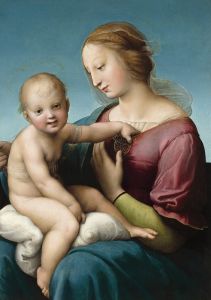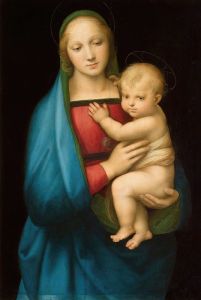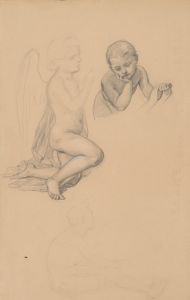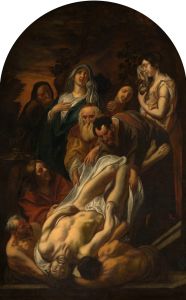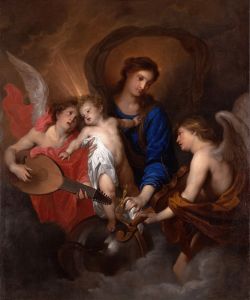
The Penitent Saint Magdalen
A hand-painted replica of Anthony van Dyck’s masterpiece The Penitent Saint Magdalen, meticulously crafted by professional artists to capture the true essence of the original. Each piece is created with museum-quality canvas and rare mineral pigments, carefully painted by experienced artists with delicate brushstrokes and rich, layered colors to perfectly recreate the texture of the original artwork. Unlike machine-printed reproductions, this hand-painted version brings the painting to life, infused with the artist’s emotions and skill in every stroke. Whether for personal collection or home decoration, it instantly elevates the artistic atmosphere of any space.
"The Penitent Saint Magdalen" is a painting by the renowned Flemish Baroque artist Anthony van Dyck. Van Dyck, who was born in 1599 in Antwerp, was a prominent figure in the 17th-century art world, celebrated for his portraits and religious works. He was a leading court painter in England and a significant influence on the development of Baroque painting.
This particular work, "The Penitent Saint Magdalen," depicts Mary Magdalene, a biblical figure who is often portrayed in Christian art as a symbol of repentance and redemption. In the New Testament, Mary Magdalene is described as a follower of Jesus who witnessed his crucifixion and resurrection. Over time, she became associated with the image of a penitent sinner, a theme that resonated deeply in the religious art of the Baroque period.
Van Dyck's depiction of Saint Magdalen is characterized by its emotional depth and dramatic use of light and shadow, hallmarks of the Baroque style. The painting captures a moment of introspection and spiritual awakening, with Mary Magdalene often shown in a contemplative pose, her gaze directed upwards or towards a religious symbol such as a crucifix or a skull, which signifies mortality and penance.
The composition of the painting is carefully structured to draw the viewer's attention to the figure of Magdalene. Van Dyck's use of chiaroscuro, the contrast between light and dark, enhances the three-dimensionality of the figure and imbues the scene with a sense of drama and immediacy. The light typically falls on Magdalene's face and hands, highlighting her expression and gesture, which convey a sense of inner turmoil and divine revelation.
Van Dyck's ability to convey emotion through subtle facial expressions and body language is evident in this work. The painting reflects his mastery in rendering the human form and his sensitivity to the psychological states of his subjects. This skill was honed during his early years in Antwerp and further developed during his time in Italy, where he studied the works of Italian masters such as Titian and Caravaggio.
"The Penitent Saint Magdalen" is one of several religious paintings by Van Dyck that explore themes of repentance and redemption. His religious works often reflect the spiritual and cultural milieu of the Counter-Reformation, a period marked by a renewed emphasis on piety and the power of the Church. Through his art, Van Dyck contributed to the visual language of this era, creating images that were both devotional and deeply human.
While the exact date of the painting's creation is not always precisely documented, it is generally attributed to Van Dyck's mature period, when he was producing some of his most acclaimed works. The painting is housed in various collections, and its presence in museums and galleries continues to attract art enthusiasts and scholars alike, who admire Van Dyck's technical prowess and his ability to convey complex emotional narratives.
In summary, "The Penitent Saint Magdalen" by Anthony van Dyck is a quintessential example of Baroque religious art, embodying the era's aesthetic and spiritual concerns. Through his masterful use of light, composition, and expression, Van Dyck creates a powerful image of repentance and faith that resonates with viewers to this day.





